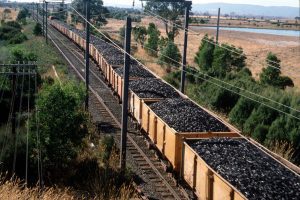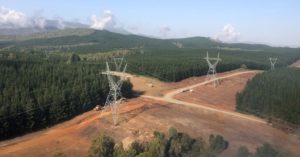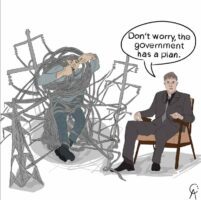By Jorge Madrid, Kate Gordon & Tina Ramos
When it comes to Big Oil, the latest news clips say it all—soaring gas prices topping $4 a gallon; a record-high $33.5 billion, or $368 million per day, in 2012 first-quarter profits for BP, Chevron, ConocoPhillips, ExxonMobil, and Royal Dutch Shell; the industry sitting on more than $58 billion in cash reserves as of the end of 2011 but still receiving $2 billion in government subsidies; and a continued practice of bankrolling the campaigns of conservative lawmakers who then demand more drilling and less federal regulation and oversight.
These almost-daily news stories, however, are the tip of a much larger iceberg. Today the American Petroleum Institute (API) launches their long-term vision for the future, which to no surprise centers on “unleashing the full benefit of developing U.S. oil and natural gas resources.”
Every day, Americans face decisions that will have a monumental impact on how we will generate and use energy in the future. As we write these words, policymakers in Washington, D.C., and across the country are debating whether to throw open the Arctic and our public lands to gas and oil drilling, whether to build a massive pipeline infrastructure that will bisect the entire country and import “tar sands” from Canada, and whether to weaken federal and state environmental protections against fossil fuel pollutants in the name of “economic growth.” These decisions will not only determine our short-term fuel choices, but they will also steer the course of our collective economic, political, and environmental futures. Which begs a crucial question for all Americans to consider: What kind of country will we be in in 2030 if we let Big Oil and their interests in Congress have their way?
We can’t pretend to be able to predict the future and truly answer this question. But even though we can’t summon H.G. Wells’s time machine or look into the future with a crystal ball, we do have some sobering scientific projections and analyses that can help us understand what the future might hold if we refuse to break our addiction to fossil fuels. This report is an attempt to use those data to envision that future.
And now, come with us into the future.
The regression of 2012
The United States’ prolonged unwillingness to develop a long-term, sustainable energy strategy has left us with a daunting challenge—the need to run a 21st century economy using 20th century energy sources and infrastructure. Our energy choices, or lack thereof due to the dominance of fossil fuels, have caused irreparable damage to the environment and public health, have caused our country to forego countless economic opportunities, and have made us far more vulnerable to fossil fuel price volatility than ever before. Not to mention that our relentless inaction on climate change mitigation and adaptation has left every state’s communities, local economies, and natural resources at risk.
Things could have been different if, back in 2012, we had not made far-reaching choices about our energy future by choosing leaders who prioritized the short-term profitability of Big Oil over the long-term goal of developing a 21st century energy agenda. The result was an energy strategy focused on increased domestic production of a few fossil fuels rather than a more balanced approach including truly low-carbon energy sources and energy efficiency.
In short, we doubled down and chose the path of “drill, baby, drill.” We opted out of every opportunity to innovate and build a 21st century energy infrastructure and instead chose to maintain the dirty status quo of the 20th century.
The American public isn’t stupid. We didn’t deliberately choose the path of economic insecurity and climate instability. So how exactly did we get here?
Back in 2012 the oil and gas companies promised us millions of new jobs if we let them have their way and gave them carte blanche to exploit domestic fossil fuels. Big Oil said that drilling for domestic fossil fuels would shield our country from global conflict by breaking our dependence on foreign oil from the Middle East and reducing government spending on oil imports. The oil and gas companies promised us a safer, stronger, and more prosperous country.
We made decisions in 2012, especially during the November 2012 elections, that gave Big Oil enormous power and influence. We let Big Oil bankroll politicians who pretended that climate science wasn’t real, called clean energy a “myth,” and told millions of Americans holding green jobs that their livelihoods were “phony.” We let campaign consultants and pollsters tell us not to hold candidates accountable on their positions on global warming or government support for emerging clean energy industries.
These decisions had major consequences in the ensuing decades. After the 2012 elections Congress pushed to open the Gulf of Mexico, the Atlantic and Pacific Outer Continental Shelves, major swaths of public lands, and the Arctic National Wildlife Refuge for oil drilling. They dismantled the Environmental Protection Agency and refused to regulate natural gas fracturing, or fracking, and other controversial drilling practices. Federal lawmakers killed all existing efforts to increase fuel efficiency in vehicles and sabotaged long-planned environmental controls on power plants that would have protected public health.
Remarkably, Congress listened to a small, self-interested group of oil companies when it came to making plans for America’s energy future instead of heeding the concerns of the 98 percent of climate scientists and experts who warned us that burning fossil fuels for energy was accelerating the pace of a shift in our global climate. Congress and the voting public listened to ultra-wealthy multinational oil and gas companies instead of small-business owners, community activists, environmentalists, and workers across all the myriad industries and occupations that made up the clean energy sector.
The promise of abundant oil jobs was dangled before us as an incentive – despite the fact that clean energy industries were some of the only sectors to show strong growth at the height of the Great Recession, and 3.1 million jobs in the United States were associated with the production of green goods and services in 2010.12 In contrast the single-largest category of people working directly for the petroleum industry in 2011 was cashiers at gasoline stations and stations with convenience stores.
So what did we get for our fidelity to Big Oil back then? Instead of choosing to invest in clean and efficient energy solutions post-2012, giving consumers and businesses a choice in what kind of electricity and fuel to produce and use, we committed ourselves to a carbon-intensive, extractive economic future. We kept drilling and burning, and we kept spewing noxious CO2, smog, and other pollutants into the air at exponential rates. (see graph)
While professing our desire not to leave a worse future to our children, we chose the path guaranteed to do exactly that. We went against the beliefs and best interests of the Millennial generation, 71 percent of whom believed that America’s energy policy priority should be developing alternative sources of energy.
And so we arrive in 2030, where we increasingly struggle to deal with the consequences of our shortsightedness in 2012.
Kate Gordon is the Vice President for Energy Policy, Jorge Madrid is a Research Associate for the Energy Policy team, and Tina Ramos is a Research Associate in the Energy department.
This article was originally published on Center for American Progress – www.americanprogress.org. Reproduced with permission.











